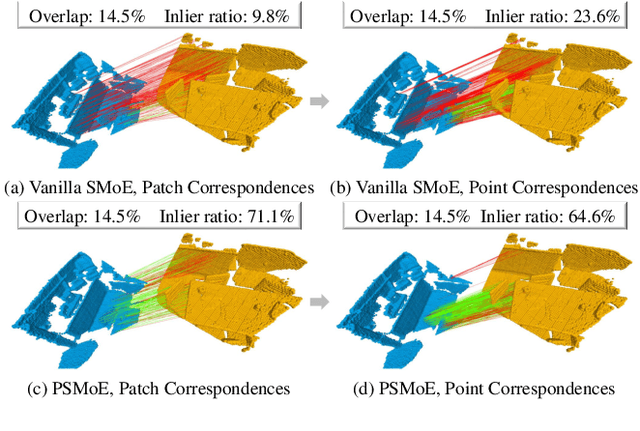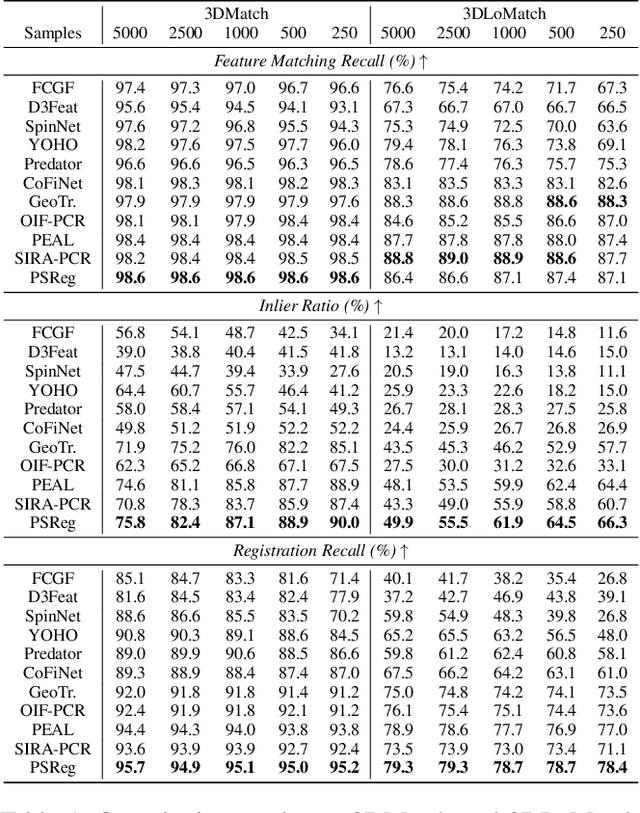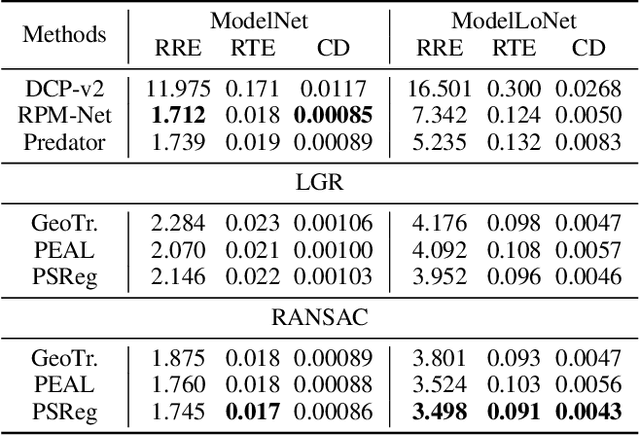Yuming Fang
Towards Realistic Low-Light Image Enhancement via ISP Driven Data Modeling
Apr 16, 2025Abstract:Deep neural networks (DNNs) have recently become the leading method for low-light image enhancement (LLIE). However, despite significant progress, their outputs may still exhibit issues such as amplified noise, incorrect white balance, or unnatural enhancements when deployed in real world applications. A key challenge is the lack of diverse, large scale training data that captures the complexities of low-light conditions and imaging pipelines. In this paper, we propose a novel image signal processing (ISP) driven data synthesis pipeline that addresses these challenges by generating unlimited paired training data. Specifically, our pipeline begins with easily collected high-quality normal-light images, which are first unprocessed into the RAW format using a reverse ISP. We then synthesize low-light degradations directly in the RAW domain. The resulting data is subsequently processed through a series of ISP stages, including white balance adjustment, color space conversion, tone mapping, and gamma correction, with controlled variations introduced at each stage. This broadens the degradation space and enhances the diversity of the training data, enabling the generated data to capture a wide range of degradations and the complexities inherent in the ISP pipeline. To demonstrate the effectiveness of our synthetic pipeline, we conduct extensive experiments using a vanilla UNet model consisting solely of convolutional layers, group normalization, GeLU activation, and convolutional block attention modules (CBAMs). Extensive testing across multiple datasets reveals that the vanilla UNet model trained with our data synthesis pipeline delivers high fidelity, visually appealing enhancement results, surpassing state-of-the-art (SOTA) methods both quantitatively and qualitatively.
Recurrent Feature Mining and Keypoint Mixup Padding for Category-Agnostic Pose Estimation
Mar 27, 2025Abstract:Category-agnostic pose estimation aims to locate keypoints on query images according to a few annotated support images for arbitrary novel classes. Existing methods generally extract support features via heatmap pooling, and obtain interacted features from support and query via cross-attention. Hence, these works neglect to mine fine-grained and structure-aware (FGSA) features from both support and query images, which are crucial for pixel-level keypoint localization. To this end, we propose a novel yet concise framework, which recurrently mines FGSA features from both support and query images. Specifically, we design a FGSA mining module based on deformable attention mechanism. On the one hand, we mine fine-grained features by applying deformable attention head over multi-scale feature maps. On the other hand, we mine structure-aware features by offsetting the reference points of keypoints to their linked keypoints. By means of above module, we recurrently mine FGSA features from support and query images, and thus obtain better support features and query estimations. In addition, we propose to use mixup keypoints to pad various classes to a unified keypoint number, which could provide richer supervision than the zero padding used in existing works. We conduct extensive experiments and in-depth studies on large-scale MP-100 dataset, and outperform SOTA method dramatically (+3.2\%PCK@0.05). Code is avaiable at https://github.com/chenbys/FMMP.
Diffusion-based Facial Aesthetics Enhancement with 3D Structure Guidance
Mar 18, 2025Abstract:Facial Aesthetics Enhancement (FAE) aims to improve facial attractiveness by adjusting the structure and appearance of a facial image while preserving its identity as much as possible. Most existing methods adopted deep feature-based or score-based guidance for generation models to conduct FAE. Although these methods achieved promising results, they potentially produced excessively beautified results with lower identity consistency or insufficiently improved facial attractiveness. To enhance facial aesthetics with less loss of identity, we propose the Nearest Neighbor Structure Guidance based on Diffusion (NNSG-Diffusion), a diffusion-based FAE method that beautifies a 2D facial image with 3D structure guidance. Specifically, we propose to extract FAE guidance from a nearest neighbor reference face. To allow for less change of facial structures in the FAE process, a 3D face model is recovered by referring to both the matched 2D reference face and the 2D input face, so that the depth and contour guidance can be extracted from the 3D face model. Then the depth and contour clues can provide effective guidance to Stable Diffusion with ControlNet for FAE. Extensive experiments demonstrate that our method is superior to previous relevant methods in enhancing facial aesthetics while preserving facial identity.
Viewport-Unaware Blind Omnidirectional Image Quality Assessment: A Flexible and Effective Paradigm
Mar 08, 2025Abstract:Most of existing blind omnidirectional image quality assessment (BOIQA) models rely on viewport generation by modeling user viewing behavior or transforming omnidirectional images (OIs) into varying formats; however, these methods are either computationally expensive or less scalable. To solve these issues, in this paper, we present a flexible and effective paradigm, which is viewport-unaware and can be easily adapted to 2D plane image quality assessment (2D-IQA). Specifically, the proposed BOIQA model includes an adaptive prior-equator sampling module for extracting a patch sequence from the equirectangular projection (ERP) image in a resolution-agnostic manner, a progressive deformation-unaware feature fusion module which is able to capture patch-wise quality degradation in a deformation-immune way, and a local-to-global quality aggregation module to adaptively map local perception to global quality. Extensive experiments across four OIQA databases (including uniformly distorted OIs and non-uniformly distorted OIs) demonstrate that the proposed model achieves competitive performance with low complexity against other state-of-the-art models, and we also verify its adaptive capacity to 2D-IQA.
Computational Analysis of Degradation Modeling in Blind Panoramic Image Quality Assessment
Mar 05, 2025



Abstract:Blind panoramic image quality assessment (BPIQA) has recently brought new challenge to the visual quality community, due to the complex interaction between immersive content and human behavior. Although many efforts have been made to advance BPIQA from both conducting psychophysical experiments and designing performance-driven objective algorithms, \textit{limited content} and \textit{few samples} in those closed sets inevitably would result in shaky conclusions, thereby hindering the development of BPIQA, we refer to it as the \textit{easy-database} issue. In this paper, we present a sufficient computational analysis of degradation modeling in BPIQA to thoroughly explore the \textit{easy-database issue}, where we carefully design three types of experiments via investigating the gap between BPIQA and blind image quality assessment (BIQA), the necessity of specific design in BPIQA models, and the generalization ability of BPIQA models. From extensive experiments, we find that easy databases narrow the gap between the performance of BPIQA and BIQA models, which is unconducive to the development of BPIQA. And the easy databases make the BPIQA models be closed to saturation, therefore the effectiveness of the associated specific designs can not be well verified. Besides, the BPIQA models trained on our recently proposed databases with complicated degradation show better generalization ability. Thus, we believe that much more efforts are highly desired to put into BPIQA from both subjective viewpoint and objective viewpoint.
Max360IQ: Blind Omnidirectional Image Quality Assessment with Multi-axis Attention
Feb 26, 2025Abstract:Omnidirectional image, also called 360-degree image, is able to capture the entire 360-degree scene, thereby providing more realistic immersive feelings for users than general 2D image and stereoscopic image. Meanwhile, this feature brings great challenges to measuring the perceptual quality of omnidirectional images, which is closely related to users' quality of experience, especially when the omnidirectional images suffer from non-uniform distortion. In this paper, we propose a novel and effective blind omnidirectional image quality assessment (BOIQA) model with multi-axis attention (Max360IQ), which can proficiently measure not only the quality of uniformly distorted omnidirectional images but also the quality of non-uniformly distorted omnidirectional images. Specifically, the proposed Max360IQ is mainly composed of a backbone with stacked multi-axis attention modules for capturing both global and local spatial interactions of extracted viewports, a multi-scale feature integration (MSFI) module to fuse multi-scale features and a quality regression module with deep semantic guidance for predicting the quality of omnidirectional images. Experimental results demonstrate that the proposed Max360IQ outperforms the state-of-the-art Assessor360 by 3.6\% in terms of SRCC on the JUFE database with non-uniform distortion, and gains improvement of 0.4\% and 0.8\% in terms of SRCC on the OIQA and CVIQ databases, respectively. The source code is available at https://github.com/WenJuing/Max360IQ.
Omnidirectional Image Quality Captioning: A Large-scale Database and A New Model
Feb 21, 2025



Abstract:The fast growing application of omnidirectional images calls for effective approaches for omnidirectional image quality assessment (OIQA). Existing OIQA methods have been developed and tested on homogeneously distorted omnidirectional images, but it is hard to transfer their success directly to the heterogeneously distorted omnidirectional images. In this paper, we conduct the largest study so far on OIQA, where we establish a large-scale database called OIQ-10K containing 10,000 omnidirectional images with both homogeneous and heterogeneous distortions. A comprehensive psychophysical study is elaborated to collect human opinions for each omnidirectional image, together with the spatial distributions (within local regions or globally) of distortions, and the head and eye movements of the subjects. Furthermore, we propose a novel multitask-derived adaptive feature-tailoring OIQA model named IQCaption360, which is capable of generating a quality caption for an omnidirectional image in a manner of textual template. Extensive experiments demonstrate the effectiveness of IQCaption360, which outperforms state-of-the-art methods by a significant margin on the proposed OIQ-10K database. The OIQ-10K database and the related source codes are available at https://github.com/WenJuing/IQCaption360.
Detecting Malicious Concepts Without Image Generation in AIGC
Feb 13, 2025Abstract:The task of text-to-image generation has achieved tremendous success in practice, with emerging concept generation models capable of producing highly personalized and customized content. Fervor for concept generation is increasing rapidly among users, and platforms for concept sharing have sprung up. The concept owners may upload malicious concepts and disguise them with non-malicious text descriptions and example images to deceive users into downloading and generating malicious content. The platform needs a quick method to determine whether a concept is malicious to prevent the spread of malicious concepts. However, simply relying on concept image generation to judge whether a concept is malicious requires time and computational resources. Especially, as the number of concepts uploaded and downloaded on the platform continues to increase, this approach becomes impractical and poses a risk of generating malicious content. In this paper, we propose Concept QuickLook, the first systematic work to incorporate malicious concept detection into research, which performs detection based solely on concept files without generating any images. We define malicious concepts and design two work modes for detection: concept matching and fuzzy detection. Extensive experiments demonstrate that the proposed Concept QuickLook can detect malicious concepts and demonstrate practicality in concept sharing platforms. We also design robustness experiments to further validate the effectiveness of the solution. We hope this work can initiate malicious concept detection tasks and provide some inspiration.
Multitask Auxiliary Network for Perceptual Quality Assessment of Non-Uniformly Distorted Omnidirectional Images
Jan 20, 2025Abstract:Omnidirectional image quality assessment (OIQA) has been widely investigated in the past few years and achieved much success. However, most of existing studies are dedicated to solve the uniform distortion problem in OIQA, which has a natural gap with the non-uniform distortion problem, and their ability in capturing non-uniform distortion is far from satisfactory. To narrow this gap, in this paper, we propose a multitask auxiliary network for non-uniformly distorted omnidirectional images, where the parameters are optimized by jointly training the main task and other auxiliary tasks. The proposed network mainly consists of three parts: a backbone for extracting multiscale features from the viewport sequence, a multitask feature selection module for dynamically allocating specific features to different tasks, and auxiliary sub-networks for guiding the proposed model to capture local distortion and global quality change. Extensive experiments conducted on two large-scale OIQA databases demonstrate that the proposed model outperforms other state-of-the-art OIQA metrics, and these auxiliary sub-networks contribute to improve the performance of the proposed model. The source code is available at https://github.com/RJL2000/MTAOIQA.
PSReg: Prior-guided Sparse Mixture of Experts for Point Cloud Registration
Jan 14, 2025



Abstract:The discriminative feature is crucial for point cloud registration. Recent methods improve the feature discriminative by distinguishing between non-overlapping and overlapping region points. However, they still face challenges in distinguishing the ambiguous structures in the overlapping regions. Therefore, the ambiguous features they extracted resulted in a significant number of outlier matches from overlapping regions. To solve this problem, we propose a prior-guided SMoE-based registration method to improve the feature distinctiveness by dispatching the potential correspondences to the same experts. Specifically, we propose a prior-guided SMoE module by fusing prior overlap and potential correspondence embeddings for routing, assigning tokens to the most suitable experts for processing. In addition, we propose a registration framework by a specific combination of Transformer layer and prior-guided SMoE module. The proposed method not only pays attention to the importance of locating the overlapping areas of point clouds, but also commits to finding more accurate correspondences in overlapping areas. Our extensive experiments demonstrate the effectiveness of our method, achieving state-of-the-art registration recall (95.7\%/79.3\%) on the 3DMatch/3DLoMatch benchmark. Moreover, we also test the performance on ModelNet40 and demonstrate excellent performance.
 Add to Chrome
Add to Chrome Add to Firefox
Add to Firefox Add to Edge
Add to Edge